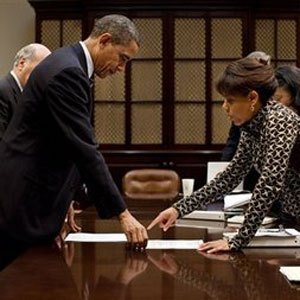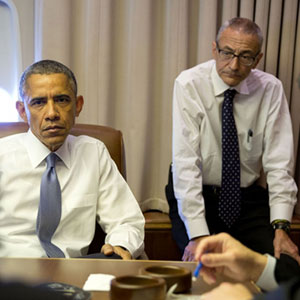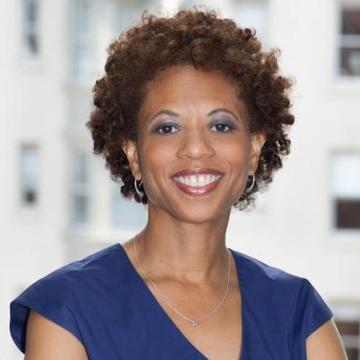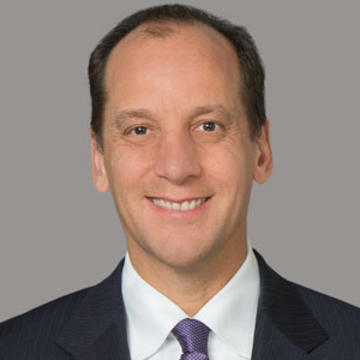What do we do now?
Successful transition teams rehearse how to hit the ground running
Melody Barnes was director of Barack Obama's White House Domestic Policy Council from 2009–12. David Marchick was chief operating officer of the United States International Development Finance Corporation (DFC) from 2021–22 under Joseph Biden.
David Marchick: Pre-election, the [Obama] campaign puts out policy positions. The transition is working off to the side, not a lot of outside engagement with groups. Then, the day after the race is declared, what do you do? What’s the transition team doing on policy? Are you starting to say, “Here are the five executive orders we want to put out on day one, here’s the sequence of the policy initiatives we want to push”? What happens the day after the election with policy?

Melody Barnes: The short answer to your question is yes. Immediately, the transition begins to think about what the president is going to do on the day that he or she is inaugurated. For better or for worse, America has become fixated on the first one hundred days. Whether you want it to be or not, the country, pundits, the media will be focused on that. There’s also some white noise in the background saying you’ve got to think about that period of time. So: executive orders. You begin to look at what’s happening as a matter of regulation. That’s part of the importance of the agency review teams. What’s been done by a prior administration that might be overturned because the new and incoming administration has strong disagreement with it?
For better or for worse, America has become fixated on the first one hundred days
There’s also [a] focus on litigation. The government never sleeps. Litigation that was started by the previous administration that the new administration has to determine if their posture is going to change or could change on. All of those issues, in addition to what’s going to happen on Capitol Hill, what will be the first pieces of legislation that a new administration wants to push for, what things were left in the hopper that still have to happen once the inauguration takes place. It is really three-dimensional chess when a new administration walks in the door, which is why those days between the election and the inauguration are so important.
David Marchick: John Podesta, who did a fantastic job on the transition, came up with this idea of developing mock councils during the transition so that the national security team would work together on policy development. He said that was a good idea to create muscle memory and process practice so that when you moved into the White House, you were ready. How did that work? Was that a good idea?
It is really three-dimensional chess when a new administration walks in the door

Melody Barnes: It worked extremely well. First of all, you’re right about John. I’ve worked with John now since 2003, and he is a brilliant student of government and has an understanding of what will work based on all of the experiences he’s had both on the Hill and in White Houses. He was right about creating that muscle memory. I didn’t realize it at the time—this was my first time going into a White House—but when I think back to the transition and the way we began to operate the process that was being put in place, my husband often laughs and says, “I never knew process could be a noun and a verb,” but you know, you run a process. That’s what has to happen in the White House. We were starting to do that, to build those relationships, to understand and build not only relationships with one another, but to the rest of government, to the Office of Management and Budget, for example.
That was important, particularly in a moment when we were in crisis, to be able to move as quickly as we possibly could once we walked through the doors of 1600 Pennsylvania Avenue. We had to do it because we couldn’t wait until after the inaugural balls, walk in the White House on January 21 and say, "What are we going to do?" There was too much to be done and too many people—the American public—counting on us. So starting that process in the transition was not only smart, it was critical.
We had to do it because we couldn’t wait until after the inaugural balls, walk in the White House on January 21 and say, 'What are we going to do?'
David Marchick: During the pre-election transition process, the transition team is basically in a bunker. Post-election, that process starts to open up, and there is just this giant spigot of input that is coiled and ready to go. How did you manage the input process from different groups, some of whom you wanted to hear from, some of whom you didn’t want to hear from?
Melody Barnes: You’re exactly right that it is intense. As I’ve told people over the course of the last several months who’ve said: “Hey, we want to send this memo. We want to send these names. How do we do this?” I’ve said to people that for the transition, it feels as though several trucks back up to the transition front door and unload reports, documents, and lists of names. They just come spilling out. Like you said, there’s a spigot. At the same time, the transition has objectives that they have to achieve.

In this instance [President-elect Biden’s transition in 2020], they’re thinking about the COVID-19 task force, they’re thinking about the Paris Climate Accord and World Health Organization, all the things that the president-elect has been talking about over the last few days. What they’re trying to figure out is how to accomplish the goals that they have in front of them, the objectives they know they have to hit, all the things that we’ve talked about, and how to sift through what’s coming in that may or may not be useful.
Like you said, there’s a spigot. At the same time, the transition has objectives that they have to achieve
We created a process for tagging and accepting all of the reports and ideas that were coming through the door so that we would have access to them. Then there was a very organized meeting process that was put in place so we could talk to people because at the same time, what you don’t want to do is look at everyone that has supported the campaign, who is enthusiastic about the Biden administration, and most importantly, all the expertise that sits on the other side of those doors and outside of government, and say, “Thank you so much, see you never.” You have to be able to organize that in a way that you can either access it later on, or you can meet with people in an orderly fashion and in a way that helps you synthesize that information into the process of policymaking, planning, executive order drafting, etc. that’s underway.

